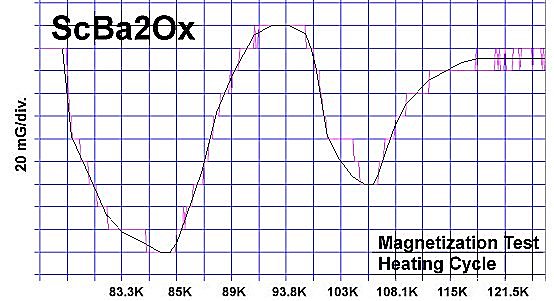
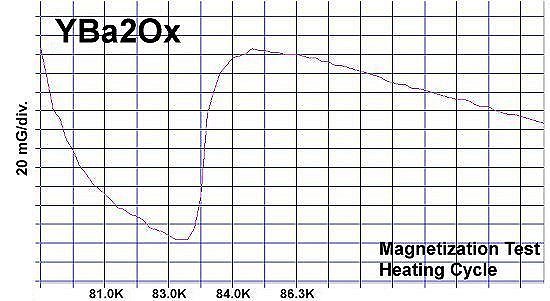


Superconductors.ORG herein reports the discovery of a Meissner transition in an oxide contain scandium: ScBa2Ox, where x ~ 3.5. Magnetization plots at page top show ScBa2Ox alongside its prototype YBa2Ox Both display strong diamagnetic transitions around 83-84 Kelvin. However, ScBa2Ox has a second Meissner transition near 105K. Twin transitions usually suggest reentrant behavior. The weaker transition near 105K was the one predicted, based on a known correlation between planar weight ratio and Tc. The 84K transition was unexpected.
Below right is the magnetometer trace when empty. It explains the negative slope on the far left side of both test plots.
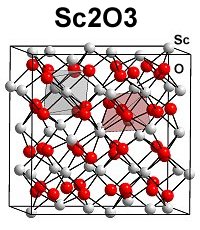
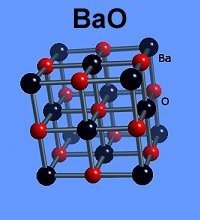
|
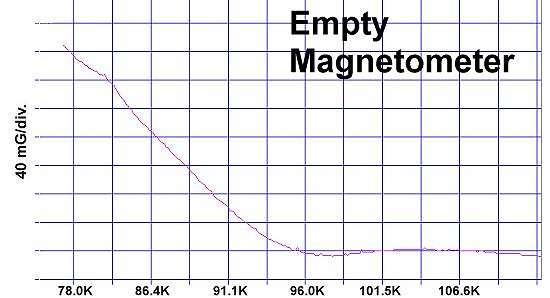
It was recently discovered that strong diamagnetism is possible without copper. This opened up a wealth of possibilites for new formulations that were previously not viable. Scandium, for example, has an ionic radius nearly identical to copper: .745-v-.730 angstroms. This means any attempt to incorporate scandium into a known copper-oxide superconductor would likely see it occupy the copper atomic sites, disrupting the mechanism of superconductivity. Since ScBa2Ox contains no copper, there is no topological conflict. Trivalent scandium is a quasi-rare earth, which may explain its reentrant signature. Some rare earths, like holmium and thulium, have shown reentrant behavior when incorporated into superconductive compounds. Scandium-oxide also has a much different structure than barium-oxide, as shown at left. Nonetheless, planar weight disparity is established on opposite sides of the oxygen atoms and doping is identical to YBa2Ox. So a positive result was expected. |
The below stoichiometric amounts of these chemicals were used in the synthesis of this material:
BaCO3 99.95% (Alfa Aesar) 14.95 grains (decomposes to BaO during calcination)The chemical precursors were mixed, pelletized at 60,000 PSI and then sintered for 11+ hours at 880C. After sintering the pellet was annealed for 10+ hours at 500C in flowing O2. Testing temperatures were determined using an Omega type "T" thermocouple and precision OP77 DC amplifier. The magnetometer employed twin Honeywell SS94A1F Hall-effect sensors with a tandem sensitivity of 50 mv/Gauss.
RESEARCH NOTE: These materials can be strongly hygroscopic. All tests should be performed immediately after annealing.
RE-PUBLICATION NOTICE: Elsevier Publishing, dba Elsevier Science, as well as Morris Communications, both print and broadcast divisions, are specifically prohibited from re-publishing any part of this news story.
E. Joe Eck
© 2016 Superconductors.ORG
All rights reserved.
 BACK to "News" page at Superconductors.ORG
BACK to "News" page at Superconductors.ORG